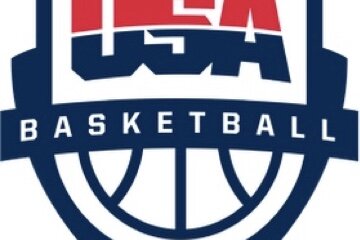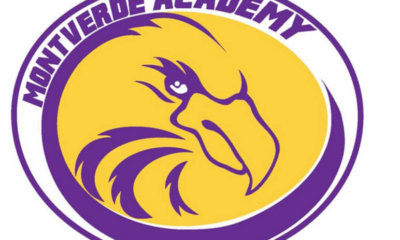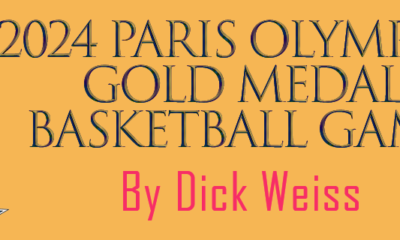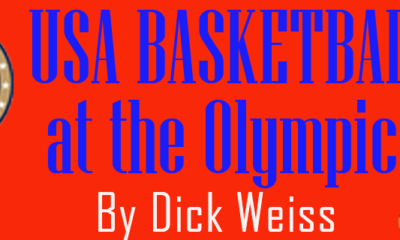PHILADELPHIA – I still get goose bumps whenever I walk into the Palestra, the historic gymnasium on the campus of the University of Pennsylvania.
I’ve been attending games there for more than 50 years and the thrill of watching college basketball in one of the great monuments to college basketball never goes away.
Last Saturday, John Feinstein of the Washington Post and myself took a trip down memory lane to watch LaSalle defeat Temple, 74-68 before in a 12 noon ESPN nationally televised game with GameDay in attendance and St. Joseph’s defeat Penn, 85-68, second
half of a day-night doubleheader that night at 7. The Temple-LaSalle game had an SRO crowd of
8,700. St. Joseph’s-Penn was almost sold out too, demonstrating once again the magnetic power of this building for both the older generation who grew up revering it and a new generation experiencing the magic of Big 5 competition for the first time.
This city has its share of unique traditions– the Penn Relays. The Dad Vail Regatta and the Army-Navy games, all held here on a regular basis.
But the Palestra is a national treasure that deserves to be open for business more often.
It was hard to believe La Salle and Temple had not played each other in this historic building since 1989, 25 years ago. Can it be that long?
In the best of all possible worlds, given the success of this experiment, the five ADs in the Big 5 — Villanova, Penn, St. Joseph’s, Temple and
La Salle– should decide to play all their city series games there instead of on campus sites, splitting the tickets down
the middle the way La Salle and Temple did this year and will do again next season when they
will play a rematch at this Cathedral. “I don’t know why you wouldn’t want to keep the tradition of playing here. There’s nothing like it in
Chicago or New York or anywhere. There’s nothing else like it,” La Salle coach John Giannini said. .
Fans of both schools —Temple wearing cherry and white and La Salle in blue and gold– packed the stands more than two hours before tipoff to stand behind the GameDay set, cheering back-and-forth at each other, holding signs and soaking in the atmosphere.
“I thought it was great,” said Temple coach Fran Dunphy, who played at the Palestra as an undergraduate at La Salle. “None of our kids had ever been involved in it and when we got here, the craziness was there and they got a bit of a start. I think it was what Philadelphia college basketball is all about.
And we were proud to be a part of it.”
Enjoy the moment. The idea of a round robin city series returning to the Palestra seems unlikely to happen since local administrators use these intense rivalry games as a carrot for fans to buy season ticket packages and preserve home court advantage.
Under the current format, the five city schools play each other in home and home competition. This year, Penn hosted Temple and St. Joseph’s and traveled to Villanova and La Salle.
Playing a day night doubleheader at the Palestra once a year sadly may be the best we can hope for. It is at least a chance to remind the rest of the country this is a still a great college basketball town
”If Temple and La Salle play on campus, it’s a game,” Giannini said. “Here, it’s an event.”
These days, Madison Square Garden likes to call itself the home of college basketball. Elite programs like Duke, Michigan State, Florida,
Pitt, Cincinnati, Connecticut, Indiana, Arizona. UCLA and Syracuse, looking for national attention from the Eastern media, have
make it a point of passing through the Mecca.
But, during its golden era that spanned close to 30 years, no building in the traditional East rocked like the Palestra, which provided a huge showcase for local high school stars who stayed home to play for legendary coaches like Hall of Famers Dr. Jack Ramsay
and the late Harry Litwack when Philadelphia took on the world during Wednesday, Friday and Saturday night doubleheaders.
Anyone who has played here– including three Big 5 players with local roots like forwards Michael Brooks and Lionel Simmons of La Salle and guard Jameer Nelson of St. Joseph’s — who was selected national Players of the Year in 1980, 1990 and 2004– and visiting
dignitaries like Wilt Chamberlain, Oscar Robertson, Jerry West, Bill Bradley, Calvin Murphy, Chris
Mullin and Patrick Ewing– understand the significance of playing in this electric atmosphere. And visiting coaches like Roy Williams still try to arrange a game there as part of a bucket list.
Last year, sadly, the six best prospects in the city– guard Matt Vasturia and Miles Overton from St. Joseph’s Prep, BJ Johnson of PIAA large school state champion Lower Merion, Raysheed Jordan of small school PIAA state champion Vaux, Ronde Hollis-Jefferson, a McDonald’s All American from Chester; and Brandon Austin of Imotep — all left home, with Vasturia going to Notre Dame, Overton to Wake, Johnson to Syracuse, Jordan to St. John’s, Jefferson to Arizona and Brandon Austin to Providence.
Keeping the best local players home is of paramount importance if the Big 5 wants to remain relevant and that means maintaining a presence in the building that helped build their reputations.
Villanova hasn’t played a home game at the Palestra since 1985, preferring to play on campus or at the 21,000 seat Wells Fargo Arena. St. Joseph’s hasn’t played a home game there since its on campus field house was renovated five years ago.
La Salle and Temple, looking for a bigger presence in the city, deserve credit for sacrificing minimal home court advantage and possible ticket revenue for the sake of creating an intangible benefit for kids to stay home and play in their backyard. La Salle, it should be pointed out, made it’s Sweet 16 run with three local players– lead guard Tyreek Duren of Neumann-Goretti, guard Ty Garland of Bartram and Mark Jerrell-Wright of Dobbins– playing key roles.
“I played the Catholic League championship at the Palestra in high school,” Duren said. “Anytime you get a chance to play a game there you got to get excited.”
The Palestra opened in 1927 with a seating capacity of 9,236. The gym, with its bleacher seating, was big enough to attract national powers and intimate enough so fans felt they were part of the action. The place is still notoriously loud and the site lines are as good as
anywhere, including 16,300 seat Allen Field House on the campus of Kansas University.
From 1956 through 1985, the Palestra was the home court for Penn, La Salle, St. Joseph’s, Temple and Villanova, who put an exclamation point on their seasons by playing each other in round robin city series competition for a mythical city championship. All five achieved national glory over the years with each advancing to the NCAA Final Four (La Salle (1954), Temple, (1956, 1958) St. Joseph’s (1961), Penn (1979) and Villanova (1971 and 1985) in the modern era. La Salle and ‘Nova each won national championships in 1954 and 1985.
No other major city, with the possible exception of New York City in the 40’s and early 50’s, has come close to duplicating that type of success.
The Big 5 lost some of its clout after the 1985 season when the presidents of Villanova and Temple, looking to increase financial revenue, opted to move their home games to campus sites, where they had designs on building their own palaces. La Salle and St. Joseph’s followed suit,
leaving Penn as the only permanent resident and local fans disturbed by a lack of loyalty that helped build their reputations..
It was the end of an era and a loss of innocence for so many of us, who grew up believing the Palestra was a magical place.













